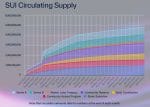Last updated:
 Why Trust Cryptonews
Why Trust Cryptonews

The U.S. spot Bitcoin exchange-traded funds (ETFs) saw net outflows totaling $43.97 million on Wednesday, halting a two-day streak of positive inflows.
The largest outflows were reported by ARKB, the bitcoin ETF from Ark Invest and 21Shares, which recorded $54.03 million in net outflows, according to data from SoSoValue.
Grayscale’s GBTC also faced losses, with net outflows of $4.59 million, while its Bitcoin Mini Trust saw approximately $511,230 in outflows.
Fidelity’s FBTC Sees Inflows
In contrast, Fidelity’s FBTC led the inflow chart with $12.57 million in net inflows for the day, and Invesco’s BTCO attracted $2.59 million.
However, several other funds, including BlackRock’s IBIT, posted zero flows.
Notably, IBIT has not experienced any net inflows since August 26.
Despite the overall outflows, trading activity remained strong.
Bitcoin ETFs collectively recorded a trading volume of $1.27 billion on Tuesday, a significant jump from $712.25 million on the previous day.
Since their introduction in January, these funds have accumulated a net inflow of $17 billion.
On the Ethereum front, U.S. spot Ether ETFs reported net outflows of approximately $542,870, with seven of the nine funds showing no daily flows.
VanEck’s ETHV saw net outflows of $1.71 million, while Fidelity’s FETH bucked the trend with $1.17 million in inflows.
Daily trading volume for Ether ETFs hit $126.22 million on Wednesday, up from $102.87 million the previous day.
However, total net outflows for Ether ETFs now stand at $562.06 million.
In the broader market, Bitcoin’s price climbed 3.37% over the past 24 hours, reaching $58,318, while Ether gained 1.78%, trading at around $2,373.
Analysts suggest that the outflows are a reaction to strong U.S. economic data, including the latest consumer price index report, which showed a 0.2% rise in prices for August.
Investors are also eyeing the upcoming Federal Open Market Committee meeting, with expectations of a 25 basis point rate cut.
How Would Rate Cuts Impact Crypto Market?
A Federal Reserve rate cut, whether 25 or 50 basis points, is likely to impact the crypto market positively, according to Ryan Lee, Chief Analyst at Bitget Research.
In a statement, Lee said that a 25-basis point cut signals moderate economic concerns and could lead to a gradual rise in crypto prices as investors seek higher returns outside traditional markets.
The rebound is expected to be mild with limited volatility.
“Investors may gradually reallocate funds from low-yield traditional assets to riskier ones, leading to a moderate market upswing,” he wrote.
In contrast, a 50-basis point cut suggests deeper economic worries and could trigger significant capital inflows into cryptocurrencies, particularly Bitcoin, as investors turn to risk assets.
This would result in a stronger market rally but also heightened volatility.
“In the short term, as investor sentiment swings, the crypto market may experience sharp price volatility, especially during the initial phase as the market digests the positive news,” Lee claimed
In the long term, he said that either rate cut would reinforce expectations of continued Federal Reserve easing, supporting demand for cryptocurrencies.




